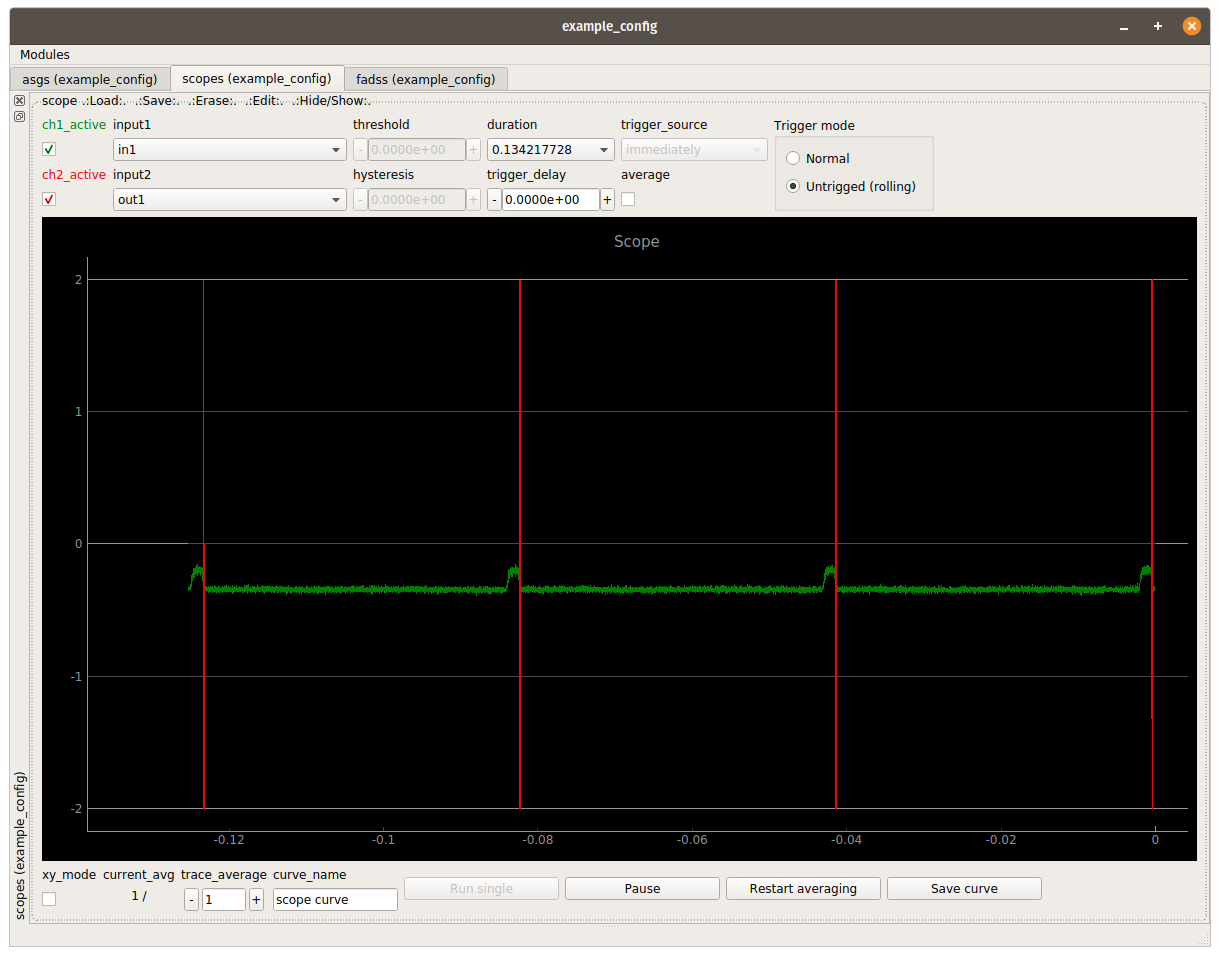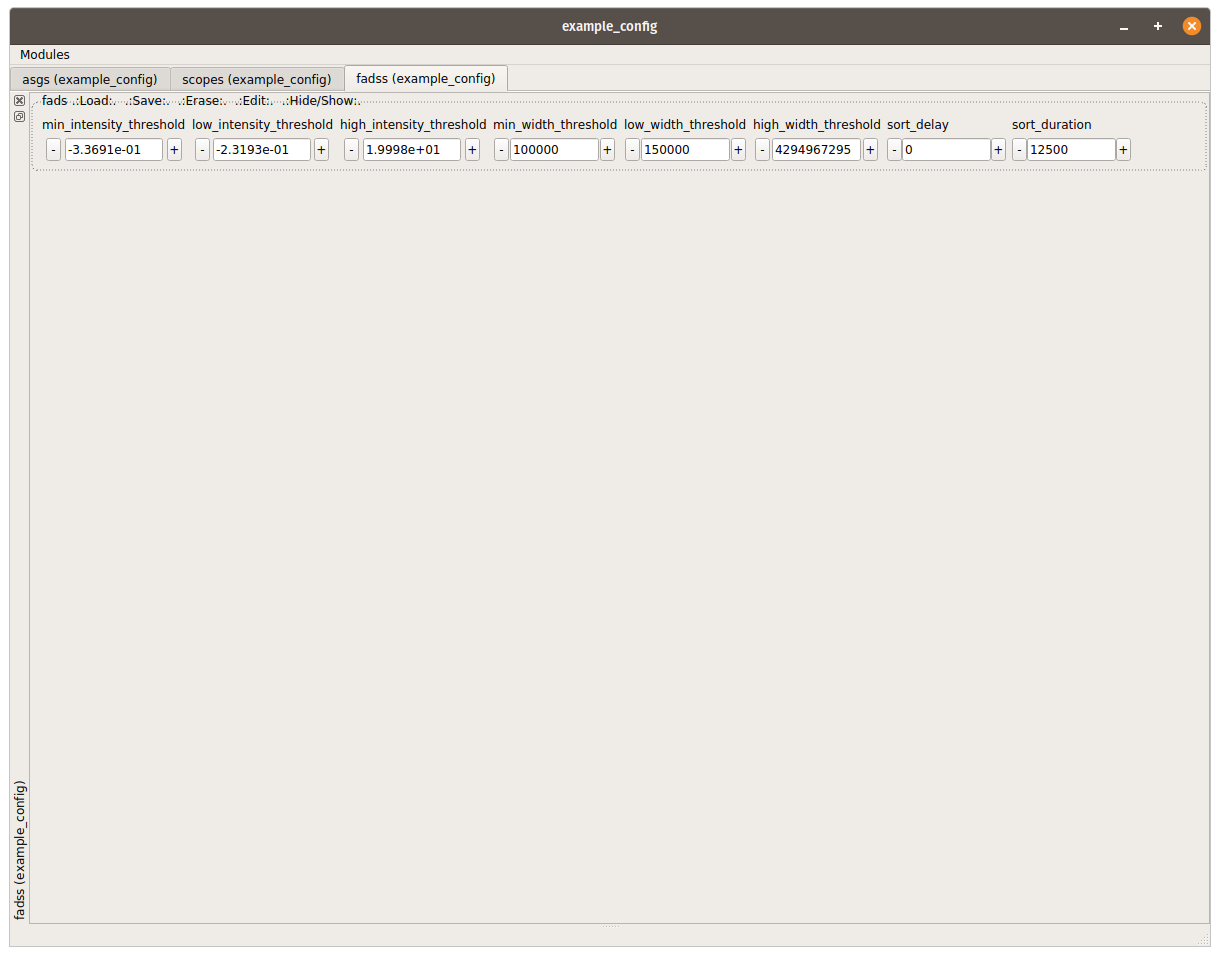-
Notifications
You must be signed in to change notification settings - Fork 0
Usage
- RedPitaya
- Cloned pyrpl repository on the open_fpga_fads branch
- Oscilloscope (for an unbiased view of what the RedPitaya is seeing and doing)
- Function generator (just for testing/evaluation purposes)
- Create a conda environment for pyrpl
conda create -y -n pyrpl-env numpy scipy paramiko pandas nose pip pyqt qtpy pyqtgraph pyyaml
activate pyrpl-env- Clone the pyrpl repository at the branch and install pyrpl
git clone https://github.com/npeschke/pyrpl@open_fpga_fads
cd pyrpl
python setup.py developFollow the pyrpl guide for preparing the hardware.
Afterwards copy the pyrpl/fads_logger directory to your RedPitaya
cd pyrpl/fads_logger
scp * root@<RedPitaya Hostname>:/root/mybin/loggerConnect to the RedPitaya over ssh and build the logger application
ssh root@<RedPitaya Hostname>
cd /root/mybin/logger
makeThis should even start the logger. For now this can be aborted using Ctrl-C
Run the following command
bash /root/mybin/logger/fads_logger > /PATH/TO/LOGFILEand replace the path with one of your liking.
CAUTION: This will overwrite the file if it already exists.
CAUTION: Keep the caveats in mind
Currently, the logfile contains the following columns:
- Droplet ID (Basic autoincrementing counter of everything that reached
min_intensity_threshold) - Droplet Intensity maximum (Raw value from the ADC before conversion)
- Droplet Intensity maximum (Scaled to the HV +-20V range of the RedPitaya but NOT calibrated)
- Droplet width in FPGA clock cycles (125 MHz clock)
- Droplet width in milliseconds
43580 -189 -0.461426 9115 0.072920
43581 -186 -0.454102 38719 0.309752
43582 -187 -0.456543 6801 0.054408
43583 -186 -0.454102 21628 0.173024
43584 -187 -0.456543 23211 0.185688
Run the run_pyrpl.py script on your computer (not the RedPitaya)
python scripts/run_pyrpl config=example_config hostname=<RedPitaya Hostname>and follow the instructions for a basic setup.
- Add the
asgs,scopesand thefadssmodules to the gui. - Set the following defaults



-
Connect the photodetector to IN1 and the high voltage amplifier to OUT1
-
Run the experiment
-
Thresholds can be tweaked using the scope screen and when daisy-chaining a Oscilloscope
- Take care of potential impedance mismatches between Photodetector and the High-Z RedPitaya scope